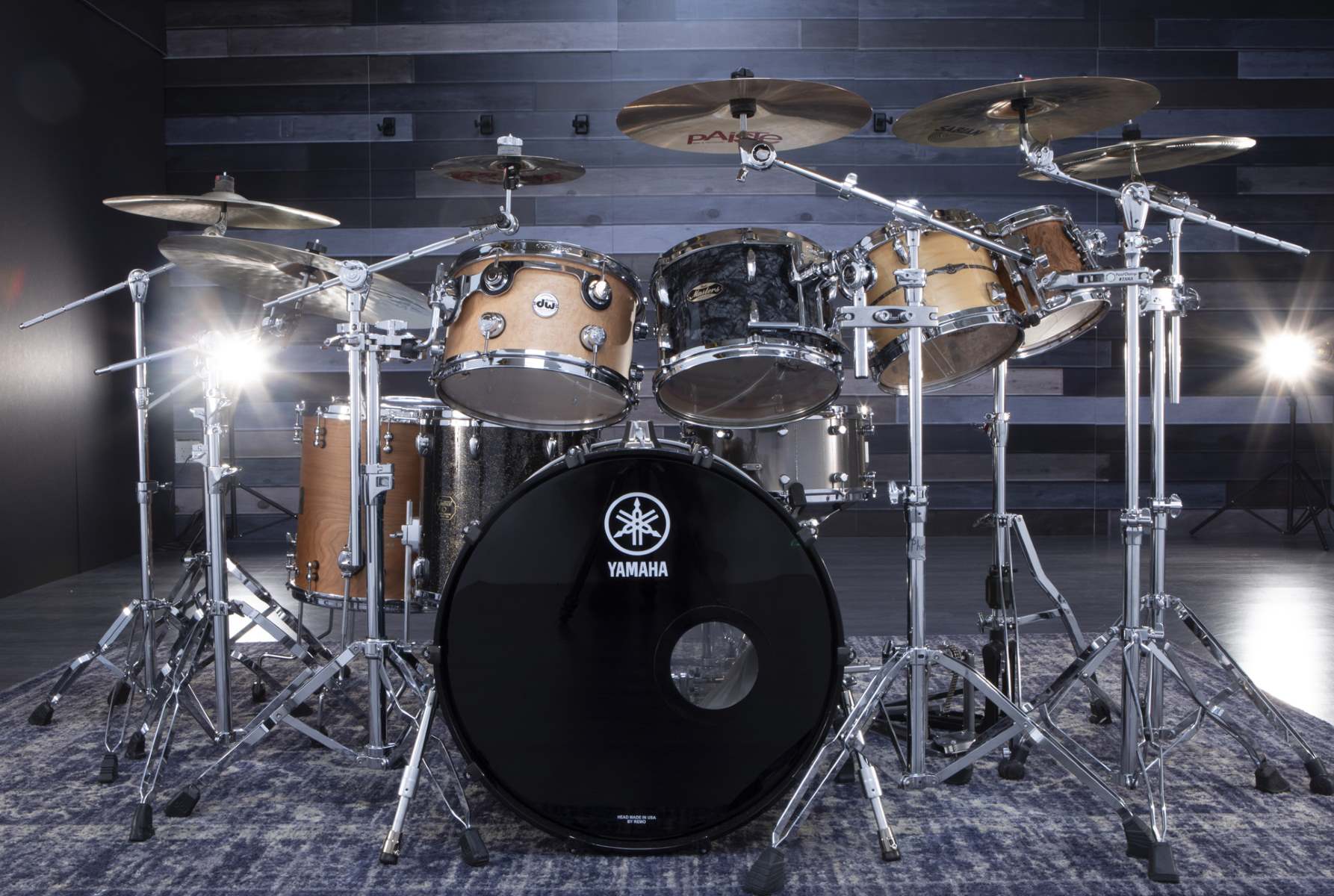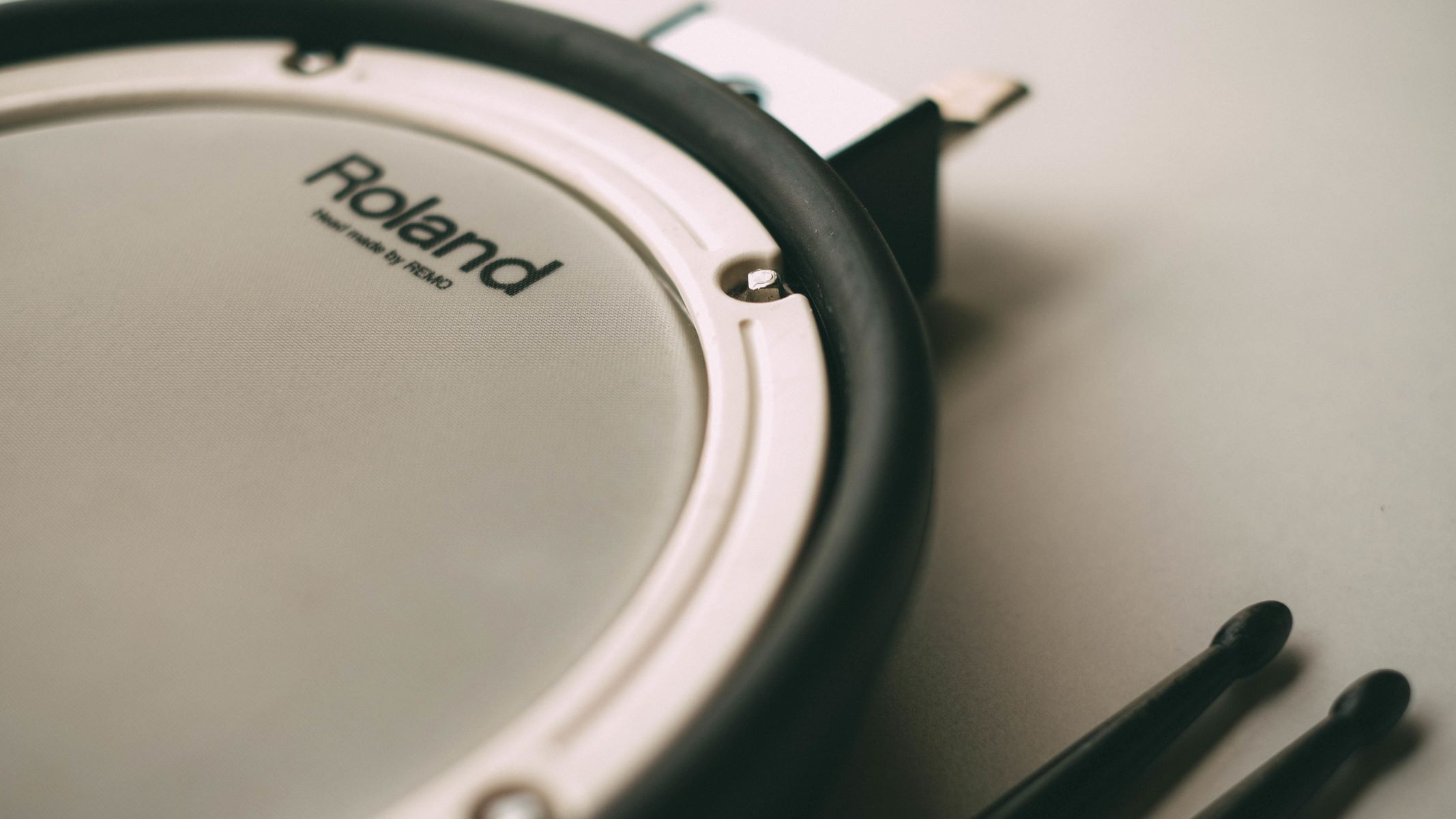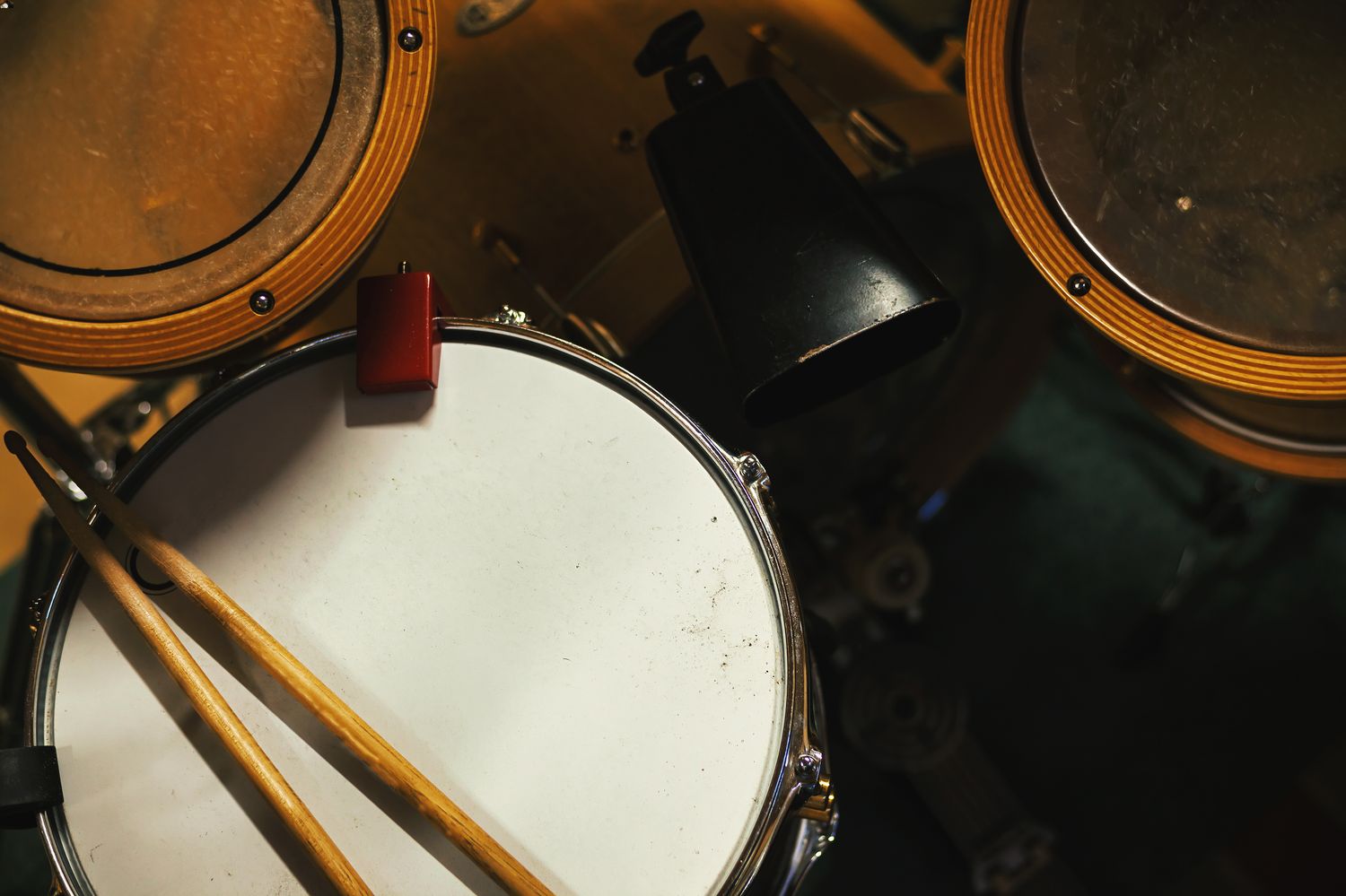Home>Instruments>Drums>How To Make Drums Sound Bigger


Drums
How To Make Drums Sound Bigger
Modified: February 8, 2024
Learn how to make your drums sound bigger with these expert tips and techniques. Enhance your drumming skills and achieve a fuller, more impactful sound.
(Many of the links in this article redirect to a specific reviewed product. Your purchase of these products through affiliate links helps to generate commission for AudioLover.com, at no extra cost. Learn more)
Table of Contents
Introduction
Introduction
Drums are the heartbeat of music, providing rhythm, depth, and energy to a wide range of musical genres. Whether you're a seasoned drummer or just starting out, understanding how to make drums sound bigger can take your music to the next level. By implementing various techniques, from choosing the right drum heads to utilizing room acoustics and processing, you can enhance the overall impact and presence of your drum sound.
Creating a larger-than-life drum sound involves a combination of technical knowledge, creativity, and an ear for detail. It's not just about hitting harder; it's about optimizing every aspect of the drum kit to produce a rich, full-bodied sound that commands attention and drives the music forward.
In this comprehensive guide, we'll explore the essential steps to make your drums sound bigger. From selecting the appropriate drum heads and tuning your drums to leveraging room acoustics and adding effects and processing, each aspect plays a crucial role in achieving a larger, more impactful drum sound. Whether you're recording in a studio or performing live, these techniques can be tailored to suit your specific musical context, ultimately elevating the sonic presence of your drums.
As we delve into the intricacies of drum sound enhancement, it's important to keep in mind that the goal is not just to increase volume, but to create a sense of depth, resonance, and power that reverberates through the music. With the right approach and a willingness to experiment, you can unlock the full potential of your drum kit and make a lasting impression with your sound. So, let's embark on this sonic journey and discover how to make drums sound bigger in a way that resonates with both musicians and listeners alike.
Choosing the Right Drum Heads
Choosing the Right Drum Heads
When it comes to making your drums sound bigger, the choice of drum heads plays a pivotal role. Drum heads are not one-size-fits-all – different types and configurations can significantly impact the overall sound and projection of your drums.
Firstly, consider the material of the drum heads. Coated drum heads, typically made of a single ply of Mylar with a textured coating, produce a warmer and more controlled sound, ideal for genres like jazz and rock. On the other hand, clear drum heads, made of a single or double ply of Mylar without a coating, offer bright and open tones, making them suitable for genres like pop and fusion.
Next, the thickness of the drum heads influences the resonance and sustain of the drums. Thicker heads provide more durability and projection, yielding a punchier and louder sound, while thinner heads offer greater sensitivity and articulation, resulting in a more nuanced and responsive sound.
Furthermore, the construction of the drum heads, such as single-ply, double-ply, or hydraulic, contributes to the overall tonal characteristics. Single-ply heads produce a wide tuning range and vibrant overtones, double-ply heads offer enhanced durability and focused tones, and hydraulic heads deliver a deep, fat sound with minimized overtones.
It’s essential to consider the specific sound you want to achieve and select drum heads that align with your musical vision. Experimenting with different combinations of drum heads can also lead to unique and personalized sonic signatures, allowing you to tailor your drum sound to suit various musical contexts and preferences.
Ultimately, the right drum heads can elevate the overall presence and impact of your drums, laying the foundation for a bigger and more resonant sound. By understanding the sonic characteristics of different drum heads and their suitability for various musical styles, you can embark on a journey of sonic exploration and craft a drum sound that captivates and inspires.
Tuning Your Drums
Tuning Your Drums
Effective drum tuning is a fundamental aspect of achieving a big, powerful sound. It involves adjusting the tension of the drum heads to produce specific pitches and ensure harmonious resonance across the drum kit. Proper tuning not only enhances the tonal quality of the drums but also contributes to their overall projection and presence in a musical mix.
Begin by ensuring that the bearing edges of the drums are in good condition, as they directly influence the way the drum heads seat and resonate. Next, use a high-quality drum key to adjust the tension of the lugs evenly, starting with the tension rods opposite each other to maintain balance. Consistent tension across the drum head is essential for achieving a clear and resonant sound.
Experiment with different tuning intervals to find the ideal pitch for each drum. For instance, higher tunings on the rack toms can produce a more cutting and articulate sound, while lower tunings on the floor toms and kick drum can yield a deeper and more robust sound. Additionally, tuning the resonant heads slightly higher than the batter heads can enhance sustain and projection.
It’s important to listen carefully while tuning and make incremental adjustments to achieve a balanced and harmonious sound across the entire drum kit. Pay attention to the interaction between the drums, ensuring that they complement each other and create a cohesive sonic palette. While tuning, tap near the tension rods to identify any inconsistencies in pitch and address them accordingly.
Furthermore, consider the musical context in which the drums will be used. For live performances, where ambient acoustics and stage volume play a significant role, tuning the drums to resonate effectively in the performance space is crucial. In a studio setting, where close miking and sound isolation are common, tuning the drums to achieve a balanced and controlled sound becomes paramount.
By mastering the art of drum tuning, you can unlock the full sonic potential of your drum kit, creating a larger-than-life sound that captivates listeners and elevates the musical experience. Whether you’re aiming for thunderous rock beats, intricate jazz grooves, or dynamic pop rhythms, meticulous drum tuning can be the key to achieving a big, bold, and resonant drum sound.
Using Room Acoustics
Using Room Acoustics
Room acoustics play a significant role in shaping the overall sound of your drums, especially in recording and live performance environments. The characteristics of the room, including its size, shape, and acoustic treatment, can profoundly impact the perceived size and resonance of the drum sound. By understanding and leveraging room acoustics, you can enhance the spatial presence and fullness of your drum sound.
Begin by assessing the acoustic properties of the room where you’ll be playing or recording drums. Larger rooms with high ceilings tend to impart a sense of openness and natural reverberation, which can contribute to a bigger and more immersive drum sound. Conversely, smaller rooms may produce a tighter and more focused drum sound, with less pronounced ambience.
Strategically positioning the drum kit within the room can also influence the perceived size and depth of the drum sound. Experiment with different placements to find the sweet spot that maximizes the natural acoustics of the room while minimizing any potential sonic drawbacks, such as excessive resonance or undesirable reflections.
When recording drums, consider utilizing room mics to capture the ambient acoustics of the space. By blending these room mics with close mics on the individual drums, you can introduce a sense of spaciousness and dimensionality to the drum sound, effectively expanding its perceived size and impact within a mix.
Furthermore, acoustic treatment such as bass traps, diffusers, and absorptive panels can be employed to optimize the room’s acoustics and minimize sonic anomalies. By addressing issues like excessive low-end buildup or flutter echoes, you can create a more balanced and natural acoustic environment that enhances the overall impact of the drum sound.
For live performances, adapting to the acoustics of different venues is essential for achieving a consistent and impactful drum sound. Understanding how the room’s acoustics interact with the drum sound can inform adjustments in playing technique, drum tuning, and microphone placement, ensuring that the drums project effectively and resonate within the performance space.
By harnessing the potential of room acoustics, you can enrich the sonic character of your drums, imbuing them with a sense of depth, spaciousness, and grandeur. Whether in a recording studio, rehearsal space, or live venue, the strategic utilization of room acoustics can elevate the perceived size and impact of your drum sound, making it larger-than-life and utterly captivating.
Adding Effects and Processing
Adding Effects and Processing
Enhancing the size and impact of your drum sound can be achieved through the strategic application of effects and processing. By leveraging a range of tools, from dynamic processors and reverbs to specialized drum effects, you can sculpt a larger-than-life sonic presence that elevates the overall musical experience.
Dynamic processors such as compressors and transient shapers play a crucial role in shaping the impact and sustain of the drums. By carefully applying compression, you can control the dynamic range of the drum sound, ensuring that softer hits are brought forward while preventing excessively loud peaks. This results in a more consistent and impactful drum sound that fills the sonic space with authority.
Transients, the initial impact and attack of each drum hit, can be shaped using transient shapers to enhance the perceived size and definition of the drums. By adjusting the attack and sustain characteristics, you can tailor the transient response to suit the musical context, whether it’s adding punch to rock drums or tightening up the dynamics of a jazz kit.
Reverb and ambience effects can introduce a sense of space and dimensionality to the drum sound, effectively expanding its perceived size and enveloping the listener in a rich acoustic environment. Experiment with different reverb types and settings to find the right balance between adding spaciousness and maintaining clarity, ensuring that the drums sound expansive without becoming distant or washed out.
Specialized drum effects, such as transient enhancers, harmonic exciters, and frequency enhancers, can be employed to further augment the size and impact of the drum sound. These tools allow you to accentuate specific sonic characteristics, add presence and sparkle to the drums, and ensure that they cut through the mix with clarity and authority.
When processing drums, it’s essential to strike a balance between enhancing their size and impact while preserving their natural character and musicality. Avoid over-processing that can lead to an artificial or overly manipulated sound, and instead, focus on refining the sonic nuances to create a larger, more compelling drum sound that retains its organic authenticity.
By skillfully integrating effects and processing into your drum production workflow, you can elevate the sonic impact and presence of your drums, making them larger, more immersive, and utterly captivating. Whether in the studio or on stage, these tools serve as a gateway to unlocking the full sonic potential of your drum sound, leaving a lasting impression on listeners and musicians alike.
Conclusion
Conclusion
Enhancing the size and impact of your drum sound is a multifaceted endeavor that encompasses technical expertise, creative exploration, and a deep understanding of sonic principles. By carefully choosing the right drum heads, tuning your drums with precision, leveraging room acoustics, and incorporating effects and processing, you can unlock the full sonic potential of your drum kit and make a lasting impression with your sound.
Each aspect of drum sound enhancement contributes to the creation of a larger-than-life sonic presence that resonates with both musicians and listeners. The choice of drum heads, with their unique materials, thicknesses, and constructions, lays the foundation for crafting a distinct and impactful drum sound tailored to your musical vision.
Tuning your drums with care and attention to detail ensures that each drum resonates harmoniously, producing a balanced and cohesive sonic palette that commands attention and drives the music forward. Understanding the influence of room acoustics allows you to harness the natural acoustical properties of the environment, expanding the perceived size and depth of your drum sound with spatial finesse.
Adding effects and processing to your drum sound production empowers you to sculpt a larger-than-life sonic presence, enriching the drums with dynamic impact, spatial dimensionality, and captivating sonic embellishments. By skillfully integrating these tools, you can elevate the sonic impact and presence of your drums, leaving a lasting impression on listeners and musicians alike.
Ultimately, the journey to making drums sound bigger is an ongoing exploration that demands a balance of technical proficiency and creative intuition. Whether you’re a drummer, producer, or audio engineer, the pursuit of a larger, more resonant drum sound is a testament to your dedication to sonic excellence and musical artistry.
As you continue on this sonic journey, remember that the goal is not just to increase volume, but to create a sense of depth, resonance, and power that reverberates through the music. With the right approach and a willingness to experiment, you can unlock the full potential of your drum kit and make a lasting impression with a sound that is larger-than-life and utterly captivating.











